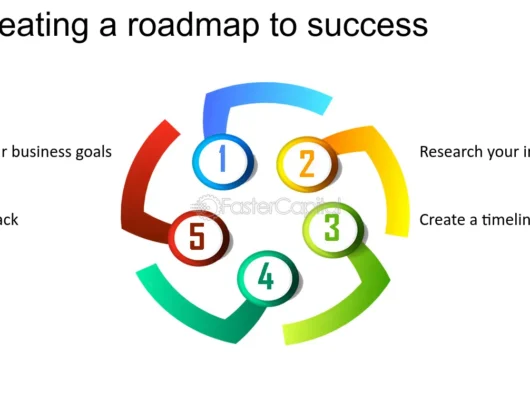Twitter has become a major platform for businesses to engage with their audience, build brand awareness, and drive sales. With over 300 million active users, a well-executed Twitter campaign can generate incredible buzz for your brand.
But how do you create a successful Twitter campaign that stands out from the crowd? This article will walk you through the essential steps of planning and executing a Twitter campaign that delivers results.
1. Understanding Twitter Campaigns
A Twitter campaign is a coordinated series of tweets and posts designed to promote a specific marketing objective. Whether you want to drive traffic to your website, increase brand engagement, or promote a product launch, Twitter campaigns allow businesses to reach a wide audience and generate real-time interaction.
- Types of Twitter Campaigns:
- Promoted Tweets: Individual tweets that appear in users’ timelines based on their interests and behaviors.
- Hashtag Campaigns: Campaigns centered around a specific hashtag to encourage user participation and conversation.
- Twitter Ads Campaigns: Paid campaigns that allow businesses to target specific demographics and gain wider visibility.
2. Set Clear Objectives for Your Campaign
Before you create a Twitter campaign, define your goals. Do you want to increase brand awareness? Boost engagement? Drive sales? Clear objectives will guide your strategy and help you measure success.
- Common Objectives for Twitter Campaigns:
- Brand Awareness: Expand your reach and visibility by reaching new potential followers.
- Engagement: Increase likes, retweets, replies, and mentions to foster interaction with your audience.
- Lead Generation: Drive traffic to landing pages, generate sign-ups, or encourage downloads.
- Sales and Conversions: Promote a product or service to increase sales or subscriptions.
3. Know Your Audience
To create an effective campaign, it’s crucial to know who you’re targeting. Twitter provides robust targeting options, allowing you to tailor your campaign to the right audience.
- Key Demographics to Consider:
- Age, location, and gender
- Interests and behaviors (based on user activity)
- Follower look-alikes (targeting users similar to your current followers)
- Keywords (targeting users who have tweeted or engaged with specific terms)
Knowing your audience ensures that your campaign resonates with them and increases the likelihood of success.
4. Create Compelling Content
Content is at the heart of every successful Twitter campaign. It’s not just about what you say—it’s how you say it. Twitter users engage with short, snappy, and visually appealing content.
- Tips for Creating Engaging Twitter Content:
- Write Catchy Headlines: Your tweets should grab attention within the first few words.
- Use Visuals: Tweets with images, GIFs, and videos get more engagement. Add high-quality visuals to make your content more appealing.
- Use Hashtags Strategically: Hashtags can boost your campaign’s visibility, but overusing them can have the opposite effect. Use 1-2 relevant hashtags.
- Include CTAs: Encourage your audience to take action with clear calls to action (e.g., “Shop now,” “Learn more,” “Retweet to enter”).
5. Use Twitter Ads to Boost Your Campaign
Paid advertising on Twitter is a powerful way to reach a larger audience and amplify your campaign’s reach. Twitter Ads allow you to promote tweets, accounts, and trends.
- Types of Twitter Ads:
- Promoted Tweets: Appear in users’ feeds and look like regular tweets but are marked as “Promoted.”
- Promoted Accounts: Help build your follower base by promoting your Twitter account to relevant users.
- Promoted Trends: Promote your hashtag in the “Trending” section for maximum exposure.
- Targeting Options: Twitter offers advanced targeting options, including interests, demographics, and even specific keywords and handles. Utilize these to ensure your ads are seen by the right people.
6. Leverage Hashtag Campaigns
Hashtag campaigns can be incredibly effective in encouraging audience participation and building community engagement. Create a unique hashtag that reflects your brand or campaign and encourage users to use it in their tweets.
- How to Run a Hashtag Campaign:
- Choose a Memorable Hashtag: Make it short, relevant, and easy to remember.
- Incentivize Participation: Offer rewards or recognition for users who engage with your hashtag (e.g., contests, giveaways).
- Monitor Hashtag Performance: Track how often your hashtag is used and engage with users who participate.
7. Engage with Your Audience in Real Time
Twitter is all about real-time interaction. Engaging with users who interact with your campaign can drive even more visibility and create lasting impressions.
- Ways to Engage:
- Reply to tweets and mentions
- Retweet user-generated content
- Like and comment on relevant tweets
- Host live Q&A sessions or Twitter chats
Real-time engagement makes your campaign feel more authentic and builds stronger connections with your audience.
8. Track and Measure Your Campaign’s Performance
Measuring the success of your campaign is essential for understanding what worked and what didn’t. Twitter offers robust analytics tools that allow you to track your campaign’s performance in real-time.
- Key Metrics to Monitor:
- Impressions: The number of times your tweet appeared in users’ feeds.
- Engagement Rate: The percentage of users who interacted with your tweet (likes, retweets, replies, etc.).
- Clicks: Track the number of clicks on links or calls to action.
- Conversions: Measure sales, sign-ups, or other desired actions that resulted from the campaign.
Use these insights to refine future campaigns and improve your strategy.
9. Examples of Successful Twitter Campaigns
- Coca-Cola’s #ShareACoke: Coca-Cola used personalized bottles with customer names and encouraged users to tweet using the hashtag #ShareACoke. This campaign went viral and generated massive engagement.
- Airbnb’s #WeAccept Campaign: Airbnb launched the #WeAccept campaign to promote diversity and inclusion. The hashtag became a global conversation, aligning with the company’s brand values.
Conclusion
Creating a successful Twitter campaign requires strategic planning, creative content, and ongoing engagement.
By setting clear goals, knowing your audience, and leveraging the right tools and tactics, you can create campaigns that drive results and strengthen your brand’s presence on Twitter.






